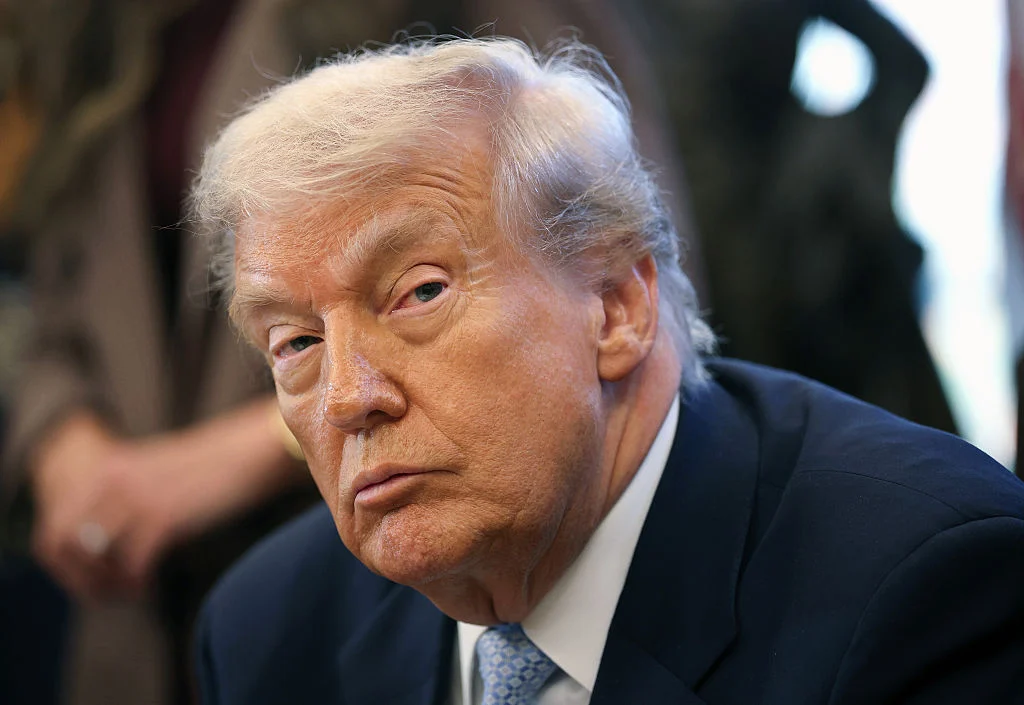Trump’s Hoarse Voice: A Peek Behind the Curtain of Trade Negotiations
During a recent press conference in the Oval Office, President Donald Trump’s voice was visibly strained, raising eyebrows among reporters. As he spoke about a newly introduced FIFA passport ahead of the upcoming World Cup, a reporter couldn’t help but inquire, “Your voice sounds a little rough. Are you feeling OK?” Trump’s response carried a blend of humor and candor, stating, “I feel great,” but attributing his hoarseness to a heated exchange he had during negotiations.
A Moment of Transparency
“I was shouting at people because they were stupid,” Trump candidly disclosed, detailing an episode centered around trade discussions with an unnamed foreign leader. The president elaborated, confirming that the leader sought to renegotiate an existing trade deal. “I was not happy about it,” he stressed, showcasing his tenacity and unwavering approach to international negotiations.
Economic Implications of Trump’s Trade Policies
While Trump’s outburst may have elicited laughter from some in the room—among them Homeland Security Secretary Kristi Noem and Secretary of State Marco Rubio—the reality of his trade policies paints a more somber picture. Economists have raised alarms that Trump’s tariffs on foreign countries have contributed to rising costs for American consumers and have adversely affected businesses, particularly small and minority-owned enterprises.
An analysis from the Center for American Progress highlights the strain his tariff policies impose, especially on Black businesses, which are grappling with the economic fallout. “His erratic tariff policies will bring rising costs and almost nonexistent avenues for exemption that threaten the survival of Black businesses,” the report notes, emphasizing the broader ramifications for communities supported by these enterprises.
Proposed Solutions Amid Rising Costs
In light of escalating economic concerns, President Trump reiterated his plan to distribute $2,000 dividend checks to working-class Americans. This proposal, coupled with the revenue generated from tariffs, aims to cushion the financial burdens faced by many households. “We are going to pay down debt. We have a lot of money from tariffs,” he asserted, highlighting a belief that tariffs are pivotal to the nation’s economic strategy.
The Financial Feasibility of Tariff Dividends
However, an analysis by the Committee for a Responsible Federal Budget raised significant concerns about the financial viability of such dividends. The analysis indicated that distributing $2,000 dividends could balloon the national deficit by $6 trillion over the next decade, despite projections for tariff earnings being around $300 billion during the same timeframe. This raises questions about where the funding for these dividends would come from and the long-term implications for the U.S. economy.
The Judicial Scrutiny of Trump’s Tariff Strategy
As the debate over Trump’s tariffs continues, the U.S. Supreme Court is currently scrutinizing their legality. If the court rules against the administration, it could necessitate the federal government paying back billions, presenting a potential economic crisis for the nation. Trade and customs experts have warned that such a scenario would be a procedural “nightmare,” complicating matters significantly for the administration.
In summary, Trump’s vocal strain during the press conference serves as a metaphor for the broader tensions within U.S. trade policy. It highlights the contentious dynamics at play as the administration navigates complex negotiations, faces economic scrutiny, and makes bold claims about its fiscal initiatives. The implications of these policies resonate beyond the Oval Office, impacting American consumers, businesses, and communities across the nation.



